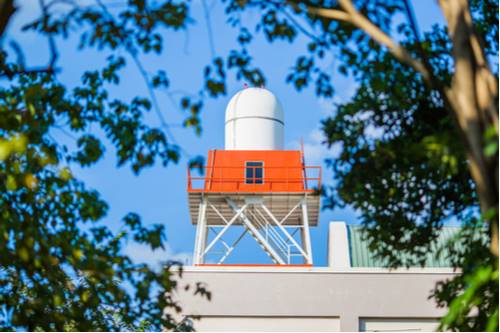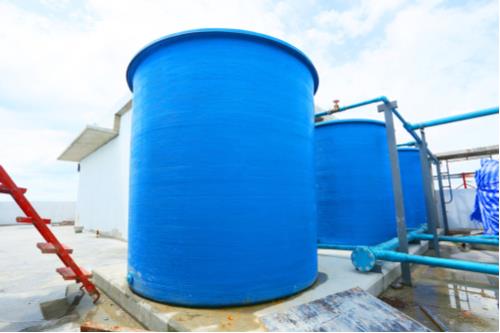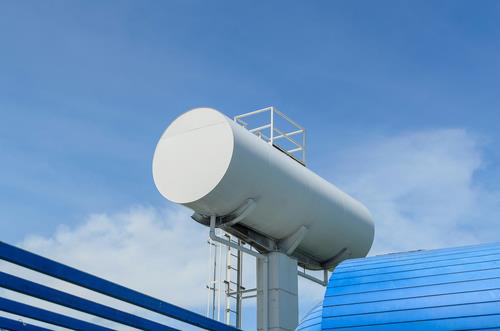House Tank Design Service
We provide high-quality house tank designs for the best outcome.
Our design solutions are customized based on your needs for optimal results.
We deliver in record turnaround times for timely execution of your project.

All home needs a steady supply of water to meet the household needs of drinking, washing, bathing and cleaning. Storage tanks are an integral part of any water distribution system where water is supplied a few hours a day. House tanks help to store water and supply it throughout the day for performing different activities. Domestic water tanks also store water for fire fighting, repairs and cut offs, ensuring a steady supply of water for the residents.
New York Engineers designs top-notch house tanks for all your water supply needs. We decide the right type of water tank for your house along with the ideal materials to use. Our engineers work out your daily water needs and ensure that you have enough water when you need it.
You can rely on us for all your water needs as we can guarantee you full satisfaction. The best time to approach us would be while designing your house when it's easy to integrate your water tank in your construction. We can also design storage tanks for existing homes but you may need additional construction and cost to install the tank.
We can design various types of house tanks based on your requirements and circumstances. Our design solutions can be customized to meet your specific needs so that you get the maximum performance out of your system. We can also design complete water distribution systems for your home with storage tanks, pipes, fittings, taps, faucets and anything else that needs to go in between.
If you need a new tank for your house, we invite you to get in touch with us for further discussions.

A typical house tank has some basic components which ensure the smooth functioning of the tank. The components include inlets and outlets, overflow and vents, drains, water level indicator, top cover and sumps.
Inlet and Outlet : The inlet is used to supply water to the tank while the outlet lets the water out for distribution. We design the inlet at the topmost level of the tank so that you can store the maximum amount of water.
The outlet is placed at the bottom of the tank so that it facilitates water circulation and helps you use maximum water. Water circulation is important to maintain the amount of residual chlorine in the water. We place the outlets 4 to 6 inches above the bottom of the tank so that impurities can collect below and don't flow out with the water.
Drain : We provide a drain at the bottom of the tank to empty the tank as needed. You may need to empty the tank to clean sediments and deposits.
Overflow Pipe : Overflow pipes are located at the top of the tank to ensure it doesn't fill beyond its capacity. Filling a tank beyond its capacity can damage the parts and the tank may also burst. Overflow pipes also allow freeboard to maintain the necessary air gap in the tank.
We generally place overflow pipes at the same level of inlets.
Vent : Vent pipes help to release the air pressure when filling the tank and are located on the top. We design the vent pipes in a way that they prevent the entry of debris or contaminants into the water.
Water Level Indicator : We generally use dipsticks (graduated rods) to indicate the level of water in the tank.
Top Cover : An opening or utility hole is provided on the top to inspect, clean and maintain the tank. The cover is designed with a lid and big enough to let a person in for maintenance and cleaning.
Sump : Sumps are located at the base of the tank for draining. You will also need additional sumps in case you use submersible pumps for above the ground or underground water tanks.
We may design your tank with additional features based on your requirements and circumstances. For example, we can provide features like guard rails, staircase and more for overhead tanks.
Vent pipes help to release the air pressure when filling the tank and are located on the top. We design the vent pipes in a way that they prevent the entry of debris or contaminants into the water.
Water Level Indicator : We generally use dipsticks (graduated rods) to indicate the level of water in the tank.
Top Cover : An opening or utility hole is provided on the top to inspect, clean and maintain the tank. The cover is designed with a lid and big enough to let a person in for maintenance and cleaning.
Sump : Sumps are located at the base of the tank for draining. You will also need additional sumps in case you use submersible pumps for above the ground or underground water tanks.
We may design your tank with additional features based on your requirements and circumstances. For example, we can provide features like guard rails, staircase and more for overhead tanks.

Typically, there can be three types of house tanks based on placement :
Overhead Water Tank : Overhead water tanks are a common sight across USA, especially in New York City. Overhead water tanks are placed generally on the roof of your house and distribute water through pipes to taps. Overhead tanks may benefit from gravity water flow system utilizing the force of gravity for water distribution.
Overhead tans using the principle of gravity has some unique advantages. For example, if you are located in New York, then your overhead tank will not need a pump to draw water from the main or municipal supply. The elevation of the New York reservoirs is high enough to push water to your overhead tank automatically.
The water distribution also follows the laws of gravity, flowing down from the overhead tank to pipes and taps located under it. Overhead tanks using gravity can work without electricity as they don't usually need pumps.
At some places, we may need to install a pump if the force of gravity is not enough to distribute the water. The pumps provide the extra pressure to supply water to the overhead tanks and make it available to the residents.
Underground Water Tanks : Underground water tanks are placed or buried under the ground. The water to underground tank is supplied directly from the mains and don't usually need a pump.
Water from underground water tanks can be distributed in two ways. We can either build another overhead tank which gets its water supply from the underground tank by using pumps. The water is then distributed in your home using the force of gravity or additional pumps. Consequently, the water from the underground tank can directly be distributed to the taps using pressure generated by pumps.
Underground tanks are ideal when you have space restrictions in your property. They are also useful to store an extra supply of water along with an overhead tank to meet water needs in the case of cut offs. We may design the underground tank to hold the maximum water supply and the overhead tank to hold around 75% of your daily needs.
Above the Ground Water Tanks : Above the ground water tanks can be used for both primary and secondary storage needs. The tanks are generally built on the ground level of your home and supply water when the overhead or underground tanks run dry. You can also depend on above the ground tanks for main storage, provided you have the necessary space to build a large enough tank to meet your needs.
Above the ground tanks generally need pumps to distribute water to your home.
A house tank may look simple, but a lot of considerations go into its designing. We have to take several factors into account like water needs, placement, pressurization and more to create an efficient water tank that never lets you down. Let's take a brief look at how we design a typical house tank.
We have to figure out your water requirements even before we put down the pen to design your tank. Generally, the per capita demand per day is used to calculate the volume of the water tank you will need. In case of a household, we will work out the required volume of the water tank based on the total number of occupants and their daily water needs.
For instance, a typical household of 10 people may have the following water requirements-
So, the total per day per person requirement comes to 35.2 gallons. Hence, for 10 people you will need a water tank of 35.2 x 10 = 352 gallons.
Here we have assumed you have daily water supply and your tank needs to store water for a day only. Based on your circumstances, you may need a bigger tank for storing water for several days, especially in water scarcity areas.
We will also take your input and any special considerations or use you may have that affects the volume of the tank. Based on all the factors, we will determine the capacity of your house tank.
You already know that there are three types of house tanks- overhead, underground and above the ground. We determine the right type of tank for you after considering various factors such as availability of space, nature of water distribution and so on.
After we have worked out your tank capacity and placement, we proceed to design the structural elements of the tank which determines the dimensions of the tank.
Pressurization
One crucial part of the design is to determine the pressurization of the tank which will be responsible for water distribution. In the case of overhead tanks, we need to use the proper height so that water can utilize the force of gravity optimally to distribute water. The elevation of the overhead tank is also important to ensure it gets the right supply of water to meet your household needs.
For underground and above the ground tanks, we design pumping systems to distribute water efficiently in your home.
Materials
We can help you choose from a number of materials to construct your tank after deciding its type and placement. You can build a tank using concrete, masonry, plastic, fiberglass, steel or wood. Choice of material also depends on your local climate. For example, we may need to use concrete for hurricane-prone areas to withstand strong winds.
Environmental Conditions
Our team will consider your local environment while designing your house tank. We take several factors into account such as wind loads, seismic conditions, snow load and more.
This is just an overview of our process and the actual steps may vary according to your individual conditions.
The Best House Tank Designers in the Industry
New York Engineers has designed countless water tanks for residential properties of all sizes. Our house tanks are durable and designed to last a long time with minimum maintenance. We help you create efficient water distributions systems whether you have a single family home or an estate. Our team consists of skilled engineers who are adept at designing efficient house tanks for clients with different needs. You can always expect quality service and top-notch designs ensure you have water when you need it the most.
Contact our team to discuss your house tank project.